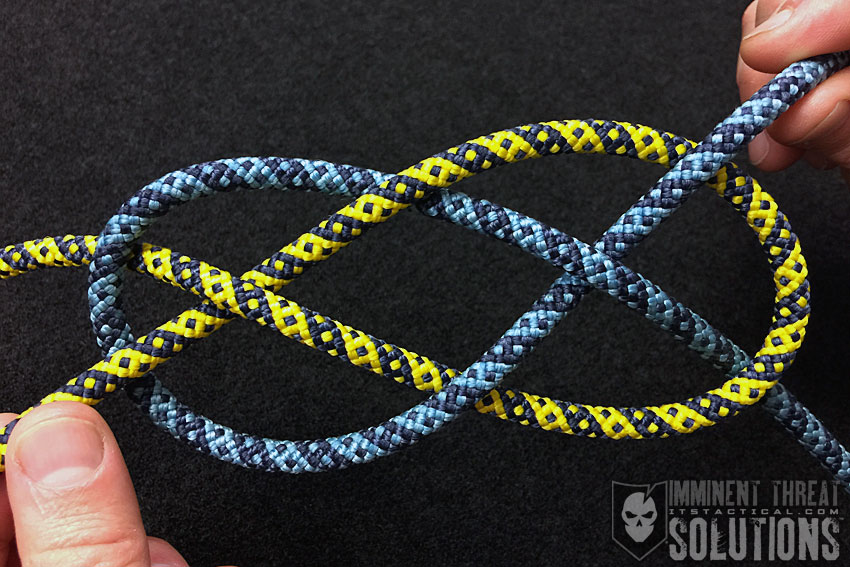

We continue our recent relaunch of the Knot of the Week series, brought to you in HD, with a few of my favorite knots. First off, I’ll be going over the Carrick Bend and the simple addition to turn it into a Lanyard Knot for a decorative way to tie lanyards, zipper pulls and more.
To round out this week’s knots, I’ll be demonstrating the Hunter’s Bend, also known as the Rigger’s Bend and one of the strongest and most secure bends out there.
(Strength: 2/Security: 2/Stability: 3/Difficulty: 4) See below for what these ratings mean.
The Carrick Bend is an easy to untie bend that won’t slip under tension. The multiple curves that give this bend those properties, also make it weaker than other bends. A checkpoint on the Carrick Bend is to ensure the working ends wind up being tied in opposite directions.
A good rule of thumb is to never let your working load on a line using a Carrick Bend exceed 1/2 of the breaking strength of the line being used.
While more of a decorative knot, the Lanyard Knot (or Diamond Knot) is easily tied with a little more work using the working ends after a Carrick Bend is tied.
Sailors used the Lanyard Knot to form a fixed loop into a line that would hold a knife around their necks, which is why you may see this knot referred to as a knife lanyard knot. It can also be used for key rings or anything that needs a pull.
(Strength: 5/Security: 5/Stability: 2/Difficulty: 3) See below for what these ratings mean.
The Hunter’s Bend gets its namesake from Dr. Edward Hunter, who is said to have developed it in 1970s, but the knot had already been in use since the 1950s. Even thought the Ashley Book of Knots (ABOK #1425A) lists this as the Hunter’s Bend, it was Phil Smith that had developed this two decades earlier when working in the San Francisco Waterfront and dubbed it the Rigger’s Bend.
An extremely strong and secure bend also makes the Hunter’s Bend tough to untie once it’s been loaded.
Strength/Security/Stability/Difficulty
Each knot will be assigned a rating from 1-5 (1 representing the lowest score) based on the following four properties:
Strength – All knots will weaken the strength of a rope, however, there are knots that are stronger than others. The scale here will reflect how strong the rope remains with the specified knot.
Security – The security scale refers to how well the knot will stay tied, and resist coming loose under a normal load.
Stability – Stability refers to how easily the knot will come untied under an abnormal load (i.e. the knot being pulled in a direction it was not intended to) A lower score here represents instability.
Difficulty – The lower the number, the easier a knot is to tie.

Do you enjoy witty banter and nostalgic geekdom all while sipping on a fine aged scotch? Then you’ll love our podcast!

Shop the ITS Store for exclusive merchandise, equipment and hard to find tactical gear.

Discussion